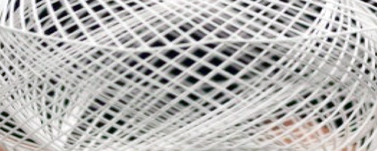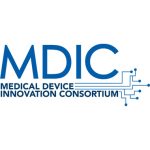Human bodies are among the most complex and variable systems in the universe, with organs performing everything from controlled chemical reactions to filtering, energy storage, motion control, breathing, pumping, oxygen delivery, waste removal and cellular synthesis. 3-D printing offers opportunities to view the body in anatomically precise layered states. Quick-turn, relatively inexpensive, multi-material components resulting from new 3-D printing technologies bring more effective development in projects, better training for clinicians, and in-depth planning before surgeries. Personalized medicine also takes leaps forward using 3-D printing. Companies are working together with strands of the medical device and healthcare industries to enable applications that bring their technology to life.
Education and Training in Healthcare
Not only do designers benefit from studying physical models—we also learn better with visual aids in the classroom. Educating the next generation of clinicians can be empowered by having 3-D printed models of unique anatomies made for specific procedures. One example is Stratasys’s collaboration with CBMTI on a neurosurgical procedure. Multi-material 3-D prints provided an opportunity to learn without the need for cadavers, with accurate geometries and individualized anatomies. A study on the merits of using 3-D printed models versus traditional methods was conducted during the collaboration, and reported that 3-D printing brought down costs; increased student performance and engagement versus textbook and CT augmented lessons; covered lessons in neurosurgery, ophthalmology, cardiology and oncology; and allowed for standardized teaching and assessment techniques of trainees.
Surgical Planning Models
The main reason for building a 3-D printed part for surgical planning is the physical, tactile feedback and what it adds to planning discussions before surgery. Otherwise, when digital-only planning is preferred, holographic models will likely provide planning with layered tissue and accurate anatomical information in the future.
Surgery is one of the oldest branches of medicine, with evidence of interventional procedures spanning back to the foundations of civilization. Throughout most of this time, the specifics of an individual’s bodily internals were a mystery. Teaching anatomy in a classroom could be done through illustrations and sculpture, with hands-on activity on cadavers or animals making things interesting for students, but quite messy. Even with the ability to use a cadaver as a teaching tool, selective systems couldn’t be isolated and used to teach, such as vasculature or muscular tissue. Cadavers were only representative to a point, as the body changes color, shape and texture after death.
For trained surgeons, planning a procedure based on external symptoms alone with no imaging tools presented huge challenges. Today, MRI’s can show internal bodily systems in sharp contrast, bringing 3-D imaging and video to life. Organs of interest can be easily reviewed and symptoms identified. 3-D models can be captured, resulting in a digital file that represents the patient’s anatomy. Tissue layers and types can then be modeled as different materials, using transparency/opacity and colour to highlight certain tissues and regions. Through methods such as PolyJet the final result can be layered in appearance. All of this results in a custom-printed anatomical model that can be used for surgeons’ planning. Expected results can be modeled in order to review the effects on surrounding tissue. A clinical team can review the procedure before it begins, aligning expectation of timeline, risk, and tools needed.
Medical Device Prototyping
During device development, stakeholders need to be engaged on key design decisions. One of the best ways to gain holistic feedback is by providing 3-D printed product prototypes. Discussing a physical object, reviewing positives and negatives of a design, and considering all feedback can lead to well informed decision making in a project team. Numerous parameters can be reviewed, from shape to texture and material. Paths forward can be decided more effectively with a better understanding of a decision’s impact. A history of the product’s development using iterative 3-D prints retained through the program offers clarity on why and how steering decisions were made.
Usability is of primary importance in medical device development. Handling a device early in a design saves time and identifies potentially overseen factors. 3-D printing technologies can adjust for texture, colour, and in some cases overall device weight. Formal studies conducted on 3-D printed prototypes create a foundation while removing ambiguity in design decisions. For example, when larger devices are developed, seeing them printed to scale in their environment presents an opportunity for it to be handled. This can reveal designs flaws while highlighting positive aspects. Trade-offs in design decisions can be vetted quickly with a physical device prototype. Reviewing aesthetics on a physical scale brings to light aspects that modeled devices cannot present.
New materials and finishes along with more added-value services have opened many new doors for 3-D printing. Competition is high in the maturing market, leading to higher volume opportunities for manufacturers and savings for customers. Regulators are wading in and publishing guidances for the 3-D printing industry. With all these factors at play, you’ve got a good recipe for integrating 3-D printed parts into finished medical products.
The overlap of the medical industry and 3-D printing is progressing rapidly. With increasing adoption in the classroom and hospital, this modular technology is showing its true value. Product development will continue to lead the use of 3-D printed prototypes for preliminary review and study. Many parts will also be carried forward into production-ready and released devices. While the future is always uncertain, we can bet on this technology finding its way into healthcare.







